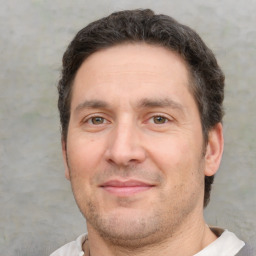This sample will guide you through:
- An individual personal reflection on employment?
- Insights on personal reflection on employment?
Personal Reflection On Employment
In my study of People and Organisations module, I was able to learn about the different types of organisational structures that commonly operate in a business and I evaluated them according to their pros and cons.
Out of the four basic types of organisational structures that I learnt about i.e. Functional organisation, line or scalar organisation, line and staff organisation and Committee organisation.
I found that the functional organisation does not involve too many levels and the higher authority is linked directly to the lower-level employees. It simplifies the management process and the specialisation of the employees performing the tasks further improves the quality of the process as suggested by Maduenyi, Oke, Fadeyi and Ajagbe (2015). However, I also learnt that when it comes to controlling, the tasks get difficult and the cost of hiring employees also increases since for each task a specialised person is required.
While studying line or scalar organisation I learnt that these organisations involve three departments and each department is further subdivided. I identified that these help in increasing the pace of decision making and there is clear segregation between the responsible person and the scope of authority is well defined. However, I also learnt that there are a variety of departmental heads and the conflicts between them increase. Ramanadham (2019), have also suggested that it increases the workload of some key personnel in the company. You can get Free Examples of Assignments here.
The third type of organisation that I learnt about is line and staff organisation I found out that these are a not very effective category of organisations since they operate on a very large scale and the managers are unable to carefully transmit the information and develop an easier process. But, as Danisewicz, Reinhardt and Sowerbutts (2015), also suggested and with which I agree, the quality of the products that are developed is very high and therefore the wastage of these products is also less.
There is a fourth type of organisation i.e. Committee organisation and under this, I learnt that there are a group of persons who gather together to advise on certain important problems and then the ideas are pooled together so that a solution can be reached. I like the concept of this type of organisation as illustrated by Chión Charles and Morales (2019), as well, where the opinions of everyone are heard and the solution is reached after mutual decision-making. But there are certain disadvantages as well which are differences in the viewpoint of different members and therefore the slower decision making in such organisation.
After conducting a detailed analysis of all the types of organisations that I studied in this module, I can satisfactorily say that I would be most comfortable in working in a functional organisation since I would be integrated into all the activities and decisions that are being made in the company and I would be able to develop my skills since there would be too much to learn. Also, I like to be involved in the activities that are going on and this acts as a major trigger point for me where I can present my opinions and I know that they are being valued or respected. Therefore, I find that I would be able to engage more and be more involved in a functional structure.
Another aspect which I learnt about the management that is implemented in these organisations and there were two major theories that I learnt were Classical Management Theory and Human Relations Theory. I learnt under classical management theory where there are multiple levels in the organisation and supervisors at each level try to organise the activities monitoring their performance. This kind of theory avoids building relationships and does not foster the development of personal relationships and the hiring and firing of employees is done frequently. I think that theory is not feasible to be applied in the current scenario and market trends since there is no involvement of the view of employees and what they think. Also, as Nicotera (2019), suggests, this lack of consideration and involvement is not supported or advocated by the current employment and leadership trends.
Under human relations theory, I learnt that the organisations implementing this kind of theory are more concerned about the employees and their satisfaction level. This helps in deriving the concept which is illustrated by Khorasani and Almasifard (2017), as well that the decision-making is quick and the motivation level of employees is also higher. Additionally, productivity is also enhanced as employees can work more productively. I would prefer to be employed in an organisation where I can present my views and where what I think is more respected and heard about. Therefore, I would prefer to follow a human relations theory and work in that organisation rather than working in an organisation where classical management theory is implemented. You can also seek assignment help.
Therefore, I can conclude, that all these aspects of leadership, organisational structures and management theories that I learnt in the People and Organisation module helped me in determining what would be the best working culture for me as an employee thus assisting me in my future and improving my learning about the different categories and practices that are adopted and implemented in different organisation types and cultures thus helping in analysing the pros and cons of different approaches.
Read more - Evaluation of English Language Teaching Material











